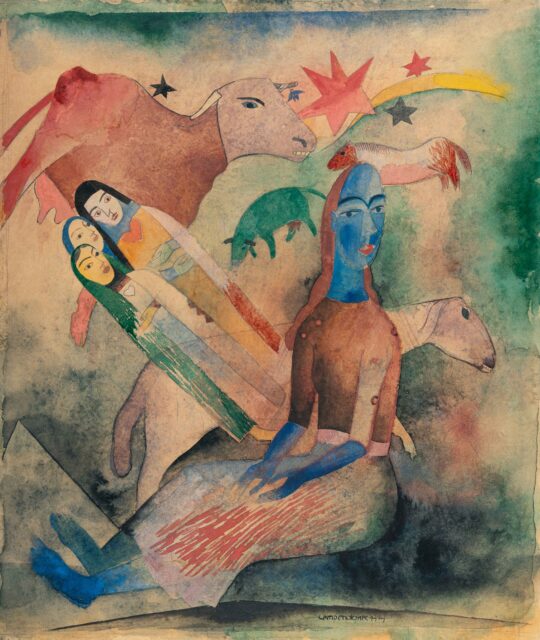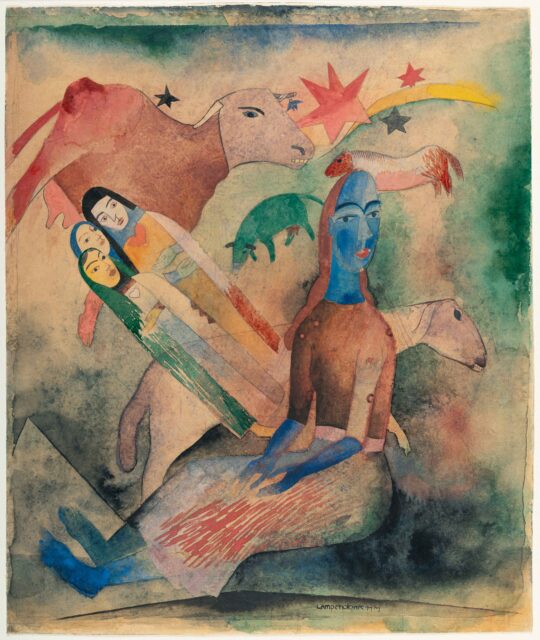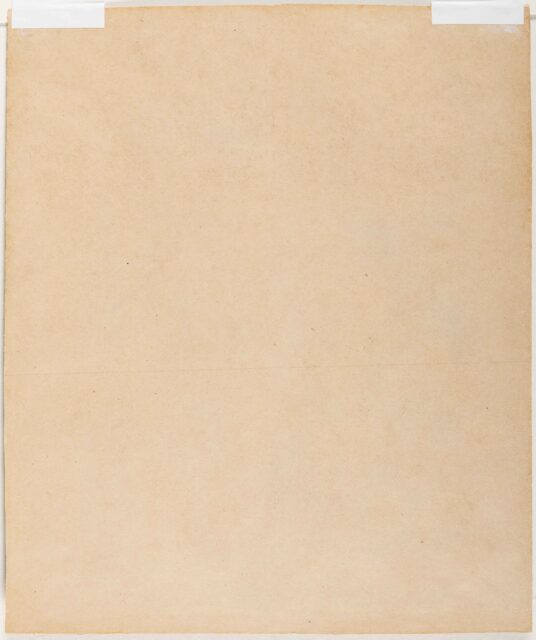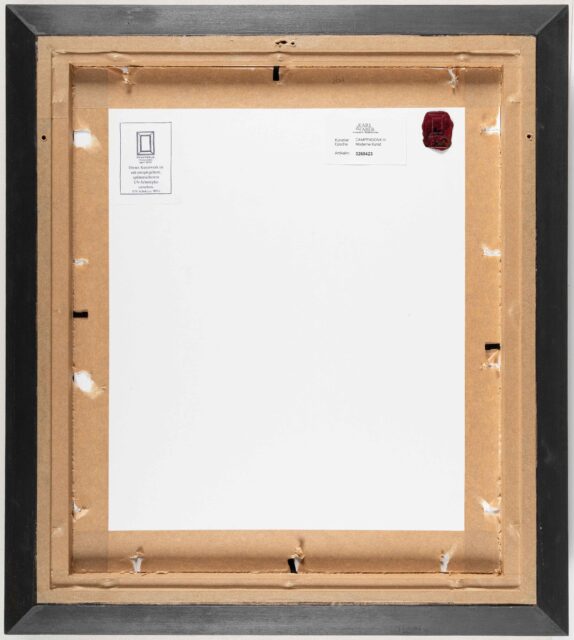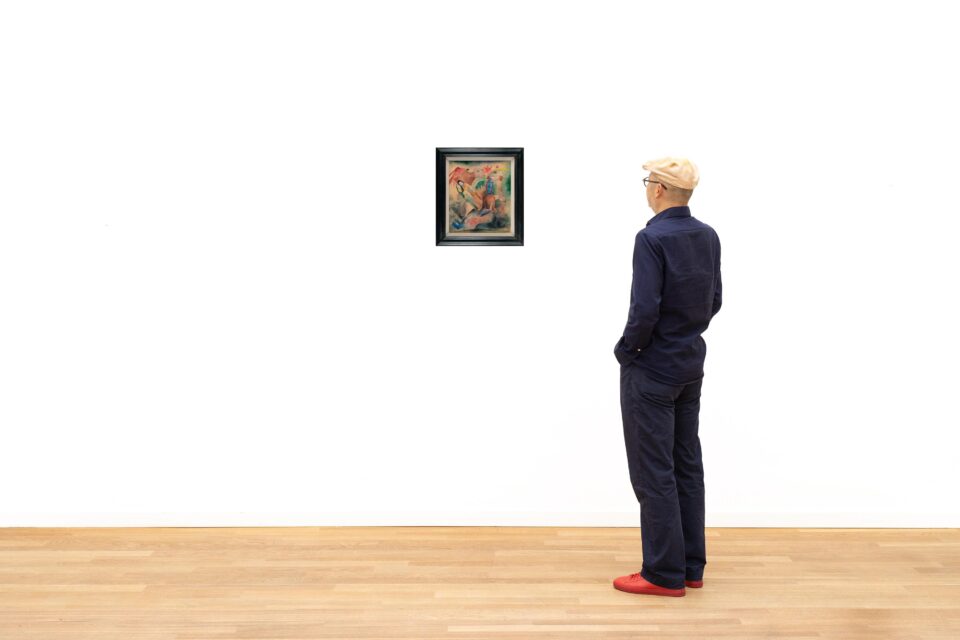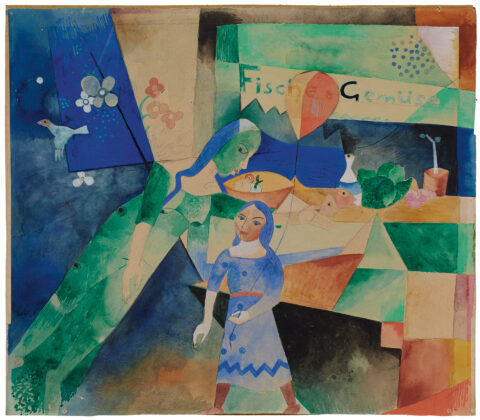
Virgin Annunciation
Details
Firmenich 809 A.
Exhibition:
Heinrich Campendonk 1889-1957, Pfalzgalerie, Kaiserslautern 1982, cat. no. 53, with col. illus;
simple. magical. The pictorial worlds of Heinrich Campendonk, Museum Penzberg – Campendonk Collection, Penzberg 2018, special exhib. o. cat.
Provenance:
Max Glaeser Collection (1871-1931), Eselsfürth near Kaiserslautern (until 1959);
Private collection;
Sotheby’s, London 28 June 1995, lot 179;
Cazeau-Béraudière Gallery, Paris;
Private collection;
Christie’s, London 8 February 2012, lot 212;
Gallery Salis & Vertes, Zurich/Salzburg;
Private collection, Switzerland.
Description
– Campendonk combines his characteristic geometric formal language with a dynamic pictorial composition characterised by seemingly floating figures
– Intensely luminous complementary contrasts create a lyrical, almost fairytale-like atmosphere
– From the important Max Glaeser collection near Kaiserslautern, which, in addition to Slevogt, Liebermann, Corinth, Munch and Hofer, mainly comprised Expressionist works (see lot 723, Slevogt)
Campendonk himself evidently considered the sheet “Annunciation of Virgin” from 1919 to be particularly successful, as he signed it with his name written out in full. In it, he breaks with the traditional depiction of the subject: the Annunciation does not take place in an interior space, but in nature expanded into the cosmic with animals, stars and the crescent moon. The message is not delivered by an angel, but by three women dressed in a strict habit, who wear their hearts on their chests but do not hand over a lily. It is remarkable that Virgin is not clothed in a blue cloak, but shows a radiant blue incarnate figure.
What the picture is about is the heavenly greeting to Virgin, which, according to each translation of the Gospel of Luke, reads: Rejoice (Greek), Peace be with you (Hebrew), Blessed are you (Latin), Hail Mary (Luther translation). In 1919, after four years of war, peace has finally come, a reason for vital joy. The grace of God is proclaimed here in a secularised form, the conception of the child is a sign of hope – and perhaps also a reference by Campendonk to the birth of his own daughter Gerda in May 1918.
Despite the still seated figure of the Virgin Mary, this is a very dynamic depiction. Several arcs swinging horizontally are drawn as lines and are also recognisable through the change of colour. They set the scene in motion: the curves at the lower and upper edges of the picture – the contour of the seated figure’s knee – the curve around the tail and back of the sheep, which continues over the pig and horse – the line across the cow’s back to the crescent moon. The swaying is intensified to the point of rotation by the actually very rigid group of three women, who are placed at an angle to the centre of gravity of the figure of the Virgin Mary.
The highly stylised forms are carefully painted with a brush, while the background shows a completely different approach to colour: Patches of very watery watercolour, applied in sections in several layers, create both a light, transparent-looking pictorial space and also bring a dynamic of light and shadow, lightness and weighty materiality to the pictorial effect. The composition gains spatial depth precisely through areas where dark and light meet, such as above the feet of the figure of the Virgin Mary. The complementary colours of green and the palette of ochre, rust and red on the one hand and the radiant blue and clear yellow of the crescent moon on the other determine the colour effect – as does the contrast of cold and warm colours typical of Campendonk’s perception of colour. Gisela Geiger
* All results incl. buyer’s premium (27%) without VAT. No guarantee, subject to error.
** All post-auction prices excl. buyer's premium and VAT. No guarantee, subject to error.
*** Conditional Sale: The bid was accepted below the limit. Acquisition of the work may still be possible in our post-auction sale.
R = regular taxation
N = differential taxation on works of art which originate from a country outside of the EU
The private or commercial use of images shown on this Website, in particular through duplication or dissemination, is not permitted. All rights reserved.


